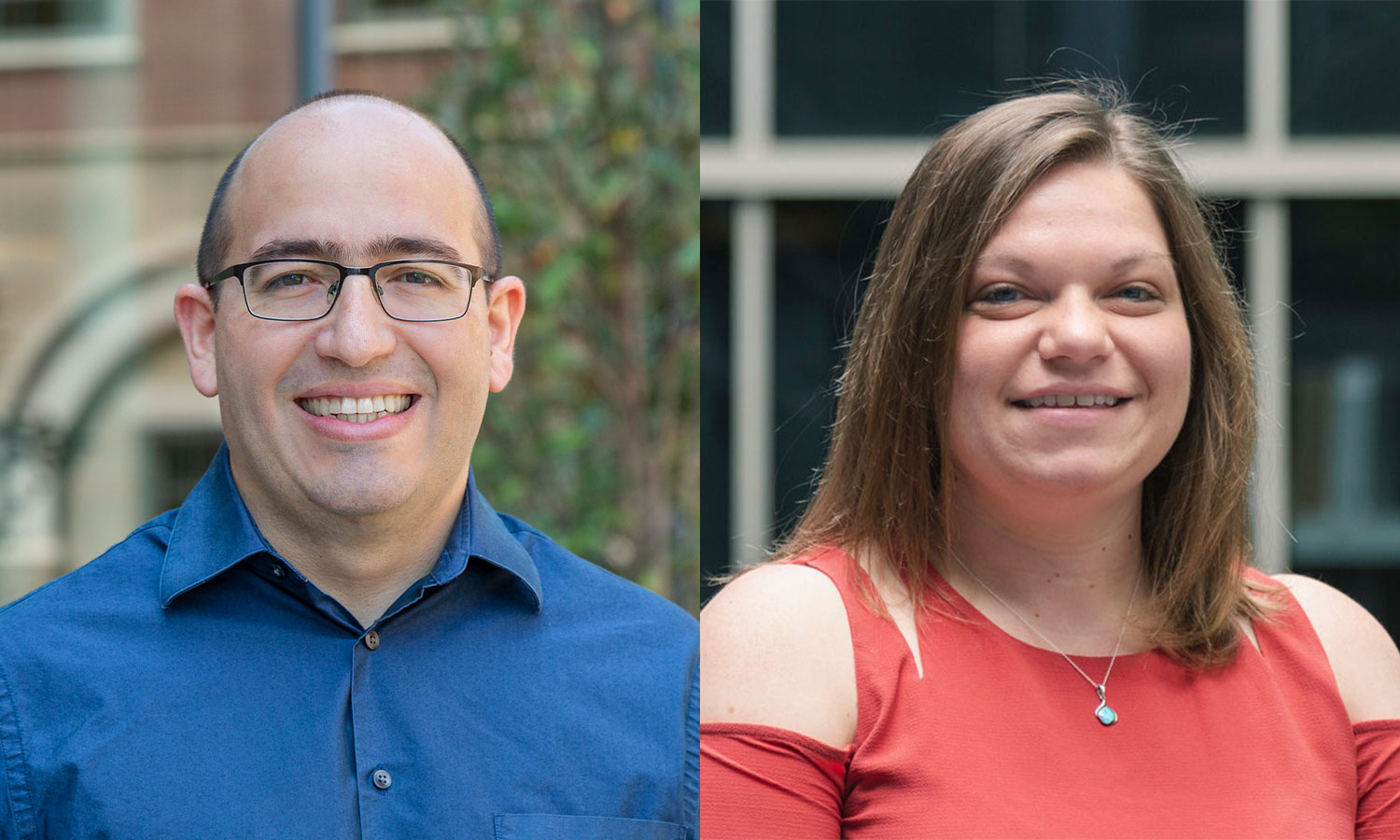Carlos Castano, Ph.D., an assistant professor in the Department of Mechanical and Nuclear Engineering, and Jennifer Puetzer, Ph.D., an assistant professor in the Department of Biomedical Engineering, have received Faculty Early Development (CAREER) awards from the National Science Foundation (NSF) for 2021. This is the NSF’s most prestigious award given to junior faculty who most effectively integrate research and education.
“The NSF CAREER awards recognize early stage faculty that show promise not only in teaching and research, but also in service. Both of our 2021 recipients are outstanding examples of this. Importantly, they reflect the core values of the university. We are proud to have them on the VCU Engineering team. There is no question that Drs. Castano and Puetzer make our commitment to our students, our research mission, and our community real,” said Barbara D. Boyan, Ph.D., the Alice T. and William H. Goodwin, Jr. Dean of VCU Engineering.
Castano: Modifying the surface of metallic powders for better sintering-based manufacturing
Castano’s award will support his research and educational program at the Surface and Coatings Engineering Laboratory (SurfACE Lab) over the next five years. His award is in the Advanced Manufacturing program of the NSF’s Civil, Mechanical and Manufacturing Innovation division.
He will investigate a new method to modify the surface of metallic powders used for sintering, a process in which powders are converted into solid masses without being liquified.
Despite scientific efforts, sintering metal alloys remains challenging. This is largely because of the limited availability of raw metal powders for advanced alloys and new materials tailored for additive manufacturing techniques such as metal 3D printing.
To remedy this, Castano is developing a method to deposit thin films on materials’ core powders to form a coating or shell on each individual grain. The new core-shell structures are designed to give materials more homogeneous and controlled microstructures when used as powder feedstock for 3D printing.
How do you coat each grain of a powder? Castano has created a machine that vibrates powders at extremely high frequencies — so high that the coating material becomes “a shower of atoms” that delivers a highly stable, consistent shell around each core. The process is called vibration-assisted high-power impulse magnetron sputtering.
“Traditionally the equipment for this exists in the microelectronics industry, but I couldn’t go into a VCU Engineering cleanroom, which must stay completely dust-free, and say, ‘I’d like to bring in some powders to use on your equipment,’” Castano said with a laugh.
The award will also allow Castano to continue his work to recruit and retain women and underrepresented minorities in the STEM field. This includes special summer programs in collaboration with James Madison University to establish a pipeline of undergraduates interested in graduate studies. He is also implementing a set of virtual laboratories in advanced materials processes and characterization of core-shell structures. These resources can serve as lab experiences for graduate students and be edited for broad dissemination to undergraduates, K-12 educators, families and the public.
Puetzer: Driving cells to produce strong, mature collagen fibers for post-injury healing
Puetzer received the award for her research in musculoskeletal tissue engineering. Collagen fibers are the primary source of strength in tissues throughout the body, particularly tendons, ligaments and menisci. Unfortunately, these collagen fibers are not regenerated after injury or in engineered tissues, providing limited treatment options. Her Musculoskeletal Tissue Engineering Lab has developed a novel system that guides cells to produce such collagen fibers — the largest produced so far in a lab, but these fibers still need to get bigger and stronger.
Her CAREER award, from the Biomechanics and Mechanobiology program in Civil, Mechanical and Manufacturing Innovation at the NSF, will investigate how the mechanical cues that occur during development further drive cells to create bigger and stronger collagen fibers. Her lab will investigate how slow stretch, similar to infant growth rates, and quick cyclic loading, similar to muscle movement of arms and legs, drive cells to produce strong, mature collagen fibers.
Ultimately, she said, “We hope to create an engineered ligament that has the mechanical properties of an ACL” to be used as a replacement after injury. Additionally, “we are interested in understanding how cells respond to these two very different types of load.” Mechanical loading is critical for collagen fiber formation in the body; however, so far it has been impossible to separate these mechanical cues to truly understand their impact on the process. “This award will give us five years to really delve into how cells regulate higher-order collagen organization, providing the fundamental knowledge needed to start repairing connective tissues throughout the body.”
This award will also allow Puetzer to continue her work in encouraging underrepresented minorities and women to pursue STEM careers by developing activities for local middle and high school students through VCU’s National Biomechanics Day and helping to train local teachers.
She is currently a National Institutes of Health (NIH) Interdisciplinary Rehabilitation Engineering Career Development Program (IREK12) scholar and holds an affiliate appointment in the Department of Orthopaedic Surgery at the VCU School of Medicine.
